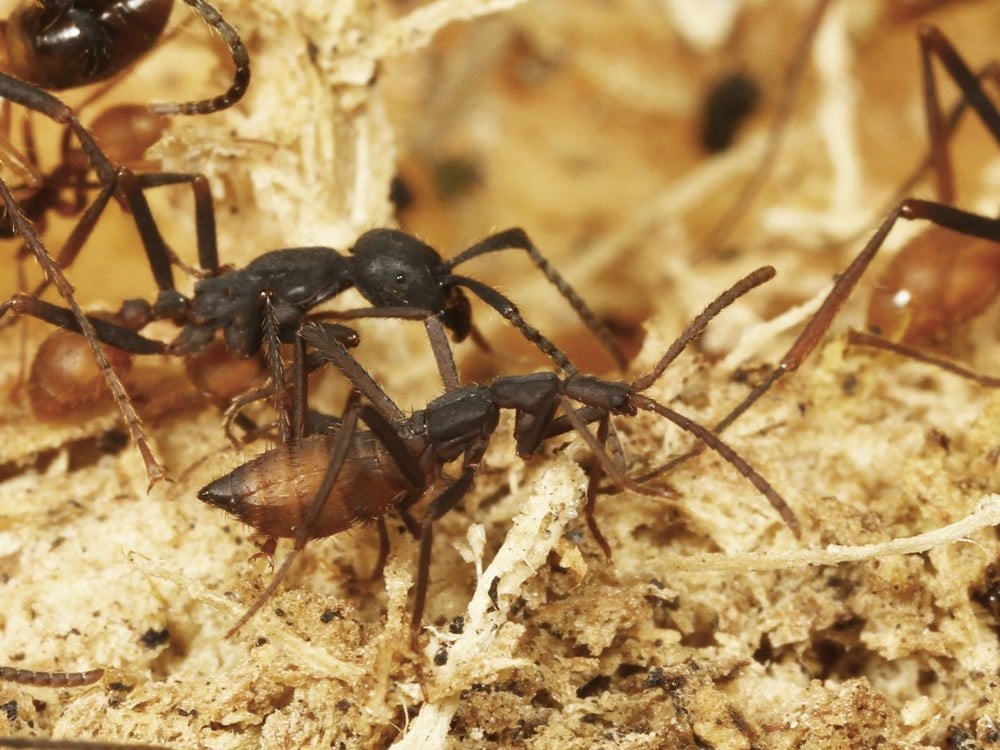The rove beetle’s ability to mimic army ants independently evolved many times

Rove beetles have evolved the ability to look and smell enough like army ants that they can live amongst them. Until it’s dinner time.
The impostors look and smell like army ants, march with the ants, and even groom the ants. But far from being altruistic nest-mates, these creatures are parasitic beetles, engaged in a game of deception. Through dramatic changes in body shape, behavior, and pheromone chemistry, the beetles gain their hostile hosts’ acceptance, duping the ants so they can feast on the colony brood.
As you can see in the photo above, the resemblance is strong…the beetle is in the foreground with the larger headed ant behind.
But that’s not even the most amazing part. A recent discovery has shown that rove beetles have evolved this capability at least a dozen separate times, suggesting that certain evolutionary possibilities are more likely than other in the presence of strong environmental factors and traits.
The ant-mimicking beetles all belong to the Staphylinidae, or rove beetles, but don’t mistake them for close relatives: the last common ancestor of the beetles in the study lived 105 million years ago, at about the time that humans split from mice. “What’s exceptional is that this convergent system is evolutionarily ancient,” says Parker. Although most other convergent systems, such as Darwin’s finches, three-spined stickleback, and African lake cichlid fish, are a few million years old at most, this newly discovered example extends back into the Early Cretaceous.
Given this great age, Parker and his co-author Munetoshi Maruyama of the Kyushu University Museum argue that their finding challenges Stephen J. Gould’s hypothesis that if time could be rewound and evolution allowed to replay again, very different forms of life would emerge. “The tape of life has been extremely predictable whenever rove beetles and army ants have come together,” says Parker. “It begs the question: why has evolution followed this path so many times?”
(via @stewartbrand)





Stay Connected